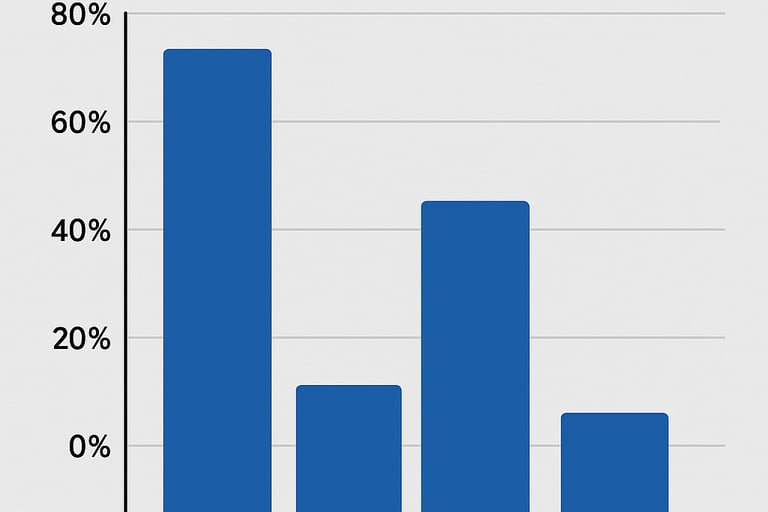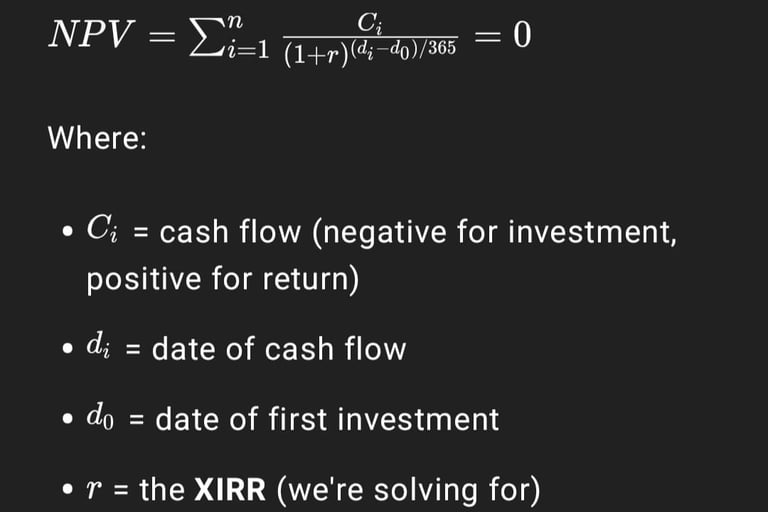Investing in Mutual Fund and Equity Asset ( Stock & Shares ) Explained
Discover the essentials of equity investment and how mutual funds operate. Learn about mutual fund units, the role of fund managers, and how stock price fluctuations can impact your investment value.
FINANCE & ECONOMICS
Equity Assets (Stocks or Shares)
1.Equity investment means we invest our money into mutual fund that uses it to buy shares of many companies listed in stock market.
2. On behalf of mutual fund companies Fund manager buys shares of different companies (equity assets).
3. These units represent our proportionate share in the fund’s total asset.
4. If the prices go up then the value of our mutual fund units NAV also rises.


Comparison chart showing investment percentage of investors in the market
1. Large Cap Funds: Invest in big, stable companies.
2. Mid Cap Funds: Invest in medium sized growing companies.
3. Small Cap Funds: invest in small companies with high growth potential but higher risk
4. Multi Cap Funds: Mix of large, mid and small caps.
Types of Equity Funds

Courtesy: Youtube Channel @morningmoneybuzz
Under Equity Investment We get Three kinds of returns
1. Normal Return by Capital Appreciation
2. Dividend Option Return
Dividend means some companies distribute their profit and give it to shareholders (owners of its stock or shares) as a reward for investing in the company. For Mutual Fund concept since they are the investors on behalf of us through their fund managers, the companies in the fund portfolio pay dividends to the Mutual Fund
(I) Dividend Payout Option
This is also known as Income Distribution Cum Capital Withdrawal (IDCW). The Mutual Fund gives you dividends in cash transferred to your bank account. you can save or spend it as you wish
• There are 100 investors each investing Rs 100000/- (1Lakh). So Total Asset sums up to Rs 10000000/- (1Cr)
And NAV unit price was Rs 10 per unit. So total unit issues were
Total Investment / Price per unit
= 10,00,000 units
• Fund Managers diversify these investors fund under Equity assets of mutual fund at different interest rates
Weighted average return same as earlier as calculated in previous example ( 50% x 8%) +( 30% x 9 %) + (20% x 9.5%) = 8.5 %
• Total Asset of the fund before expense or Annual Return from Equity Investment by Mutual Fund companies is as follows.
Total Asset of the funds before expense 8.5% of 10000000/- = Rs 850,000/-
Liability Cost is charged as 1 % by mutual fund company.
Total Liability Cost = 1% of 10000000 = 100000 /- i.e. (1 lakh)
Total Fund = (Total Asset – Total Liability)
= (850000 – 100000)
= 750,000/-
This is the dividend paid every year. For 5 years Rs 7,50,000 x 5 = Rs 37,50,000/-
Investors will receive Rs 37.50 lakh as total dividend payout. Since all returns are paid out as dividend, NAV stays constant at Rs 10 per unit . No compounding happens because earnings are distributed not re invested. As there are 100 investors, each investor will receive Rs 37,500 /- interest over 5 years.
(II) Dividend Reinvestment Option
Under this scheme the Mutual Fund Instead of giving us this dividend in cash they use it to buy us additional NAV units. this increases our Total NAV units and boosts our Compounding returns.
1. There are 100 investors each investing Rs 100000/- (1Lakh). So Total Asset sums up to Rs 10000000/- (1Cr). Total investment is 1Cr.
And NAV unit price was Rs 10 per unit. So total unit issues were
Total Investment / Price per unit
= 10,00,000 units
2. Fund Managers diversify these investors fund under Equity assets of mutual fund at different interest rates as follows
50 lakhs in Large Cap Stocks, 30 lakhs in Mid Cap Stocks, 20 lakhs in Small Cap Stocks.
Weighted Average return:( 50% x 8%) +( 30% x 9 %) + (20% x 9.5%) = 8.5 %
3. The equity assets pay interest of Rs 8.5lakh/year and after 5 year that is end of maturity period, they repay 1 Cr principal amount to the Mutual Fund along with interest amount.
.
4. Total Asset of the fund before expense or Annual Return from Equity Investment by Mutual Fund companies is as follows.
Total Asset of the funds before expense 8.5% of 10000000/- = Rs 850,000/-
Liability Cost is charged as 1 % by mutual fund company.
Total Liability Cost = 1% of 10000000 = 100000 /- i.e. (1 lakh)
Total Fund = (Total Asset – Total Liability)
= (850000 – 100000)
= 750,000/-
5. NAV growth rate for 5 year is reflected as 7.5% (Since the net return after expense is 7.5%). Initial NAV was Rs 10 per unit and after 5 years it grows at 7.5 % yearly at compound interest rate and now the final or New NAV is
= 10 (1+ 7.5%) ^5
14.35 per unit
6. Total Units Issued were 1000000 and Total Investors were 100 so each investor holding 10,000 units.
Now after 5 Years value per investors is
= 10,000 x 14.35
= 1,43 ,500/-
So total Fund Value after 5 Years increases from 1Cr to 1.435 Cr.
i.e. Rs 1,43,50,000/-
7. The Equity Assets paying 8.5 lakh per year for 5 years which sums up to Rs 8.5 lakh x 5 which is 42.5 lakh. So, in total they are returning the principal amount of 1 Cr along with 42.5 lakh interest for 5 years. So Mutual Fund Company are getting 1.425 Cr as a return to their investment on these equity assets.
8. But the Mutual giving its investors 1.435Cr and not 1.425Cr because equity Assets paying simple interest 8.5% yearly but Mutual Fund also reinvest yearly interest compounding the returns internally (after deducting expenses) that’s why funds NAV grows faster than simple interest. So, in this example mutual fund grows more than 1.425 Cr and reached 1.435Cr.
9. Although the Mutual Fund getting less interest amount after from equity Assets as interest is calculated using Simple Interest formula and not with compound interest formula.
10. What Mutual Fund Companies do is that they reinvest this incomes on new assets every year at same 8.5% return. It’s also called Reinvestment of Coupons.
If calculated after 5 years then Mutual Fund Company earning Rs 1,50,36,067 i.e. 1.5036 Cr from 1.425cr (calculated earlier). Mutual Fund Companies earning from institutions Rs 1,42,50,000 /-. Fund Managers reinvest this amount for 5 years at same interest to earn Rs 1,50,36,067/-. Finally, they are giving Rs 1,43,50,000/- to the investors.
3.Systematic Investment Plan (SIP) Return
SIP is the profit or gain you earn over time from your monthly investments in an equity mutual fund. Since you are reinvesting every month at different prices NAVs your return is calculated using a formula called XIRR a special method to calculate return on multiple, times cash flows.
Example: We invest Rs1000 every month for 3 years then total investment becomes Rs 36000/- after three years the redemption value assumed of our investment becomes Rs42100/-
Now the XIRR formula is being used where XIRR stands for (Extended Internal Rate of Return). The formula is conceptual not manual. It is calculated by trial and error method or software like Excel or Mutual Fund Platforms.
in this case XIRR equals 11.76% annualised return depending on the fund’s performance.


Facts to Remember
1. if Stock Market Fall then our mutual fund value NAV can fall.
2. Company specific bad news can affect return
3. Short term performance can be volatile.
4. long term investment (5+ years) in equity mutual funds bring better returns.



